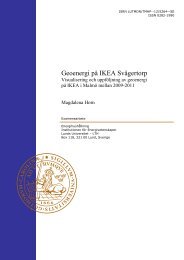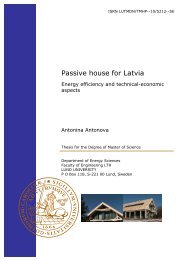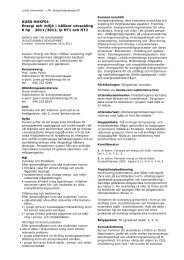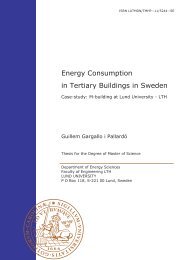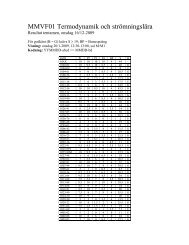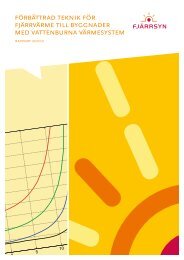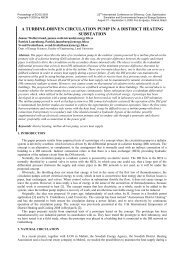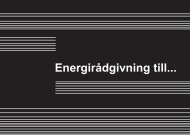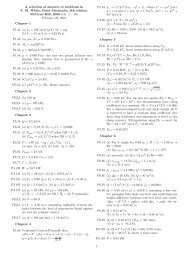MODERN THERMAL POWER PLANTS
MODERN THERMAL POWER PLANTS
MODERN THERMAL POWER PLANTS
Create successful ePaper yourself
Turn your PDF publications into a flip-book with our unique Google optimized e-Paper software.
4 Thermodynamic Power Plant<br />
Modelling<br />
Through calculations it is possible to determine the critical parameters of a power<br />
plant. In this work, such calculations were carried out to evaluate the impact of<br />
changes in the boundary conditions, the introduction of a new component or the<br />
modification of a component. One-dimensional steady-state modelling is suitable to<br />
study the effects on the whole power cycle. This type of modelling does not provide<br />
any details on the dynamic events taking place in the components, but is excellent<br />
in giving a more global view of the performance. The principle is that each<br />
component has a set of inlets and outlets at which the stagnation properties are<br />
calculated using thermodynamic equations.<br />
When designing a computer-based model, the key is to maintain a good balance<br />
between the number of inputs and the accuracy. With too many inputs, the model<br />
becomes difficult to use and the requirements on the user’s experience increase. Also,<br />
if information is not available for all the inputs, imprecise estimates may make the<br />
model less accurate than a simpler version. The number of inputs needed is<br />
generally decided by the operational window of the unit. The most complex unit to<br />
model is one that employs different working media under wide variations of<br />
temperature and pressure. It is important to evaluate every parameter that is left out<br />
and the user should be well aware of the limitations of the model.<br />
Heat and mass balance models can be based on equations or characteristics, i.e.<br />
tabulated values or graphs, or both. Simple units are preferably based on equations,<br />
but more complex units become too complicated to model with equations only.<br />
4.1 Model components<br />
A large number of equations containing an even larger amount of variables are<br />
required to model a power plant. To make modelling more practical, the equations<br />
are collected into groups representing separate units or components of the power<br />
plant such as heat exchangers, pipes, condensers, and turbine stages. Each<br />
component depends on the others and in order to model the complete cycle the<br />
23




